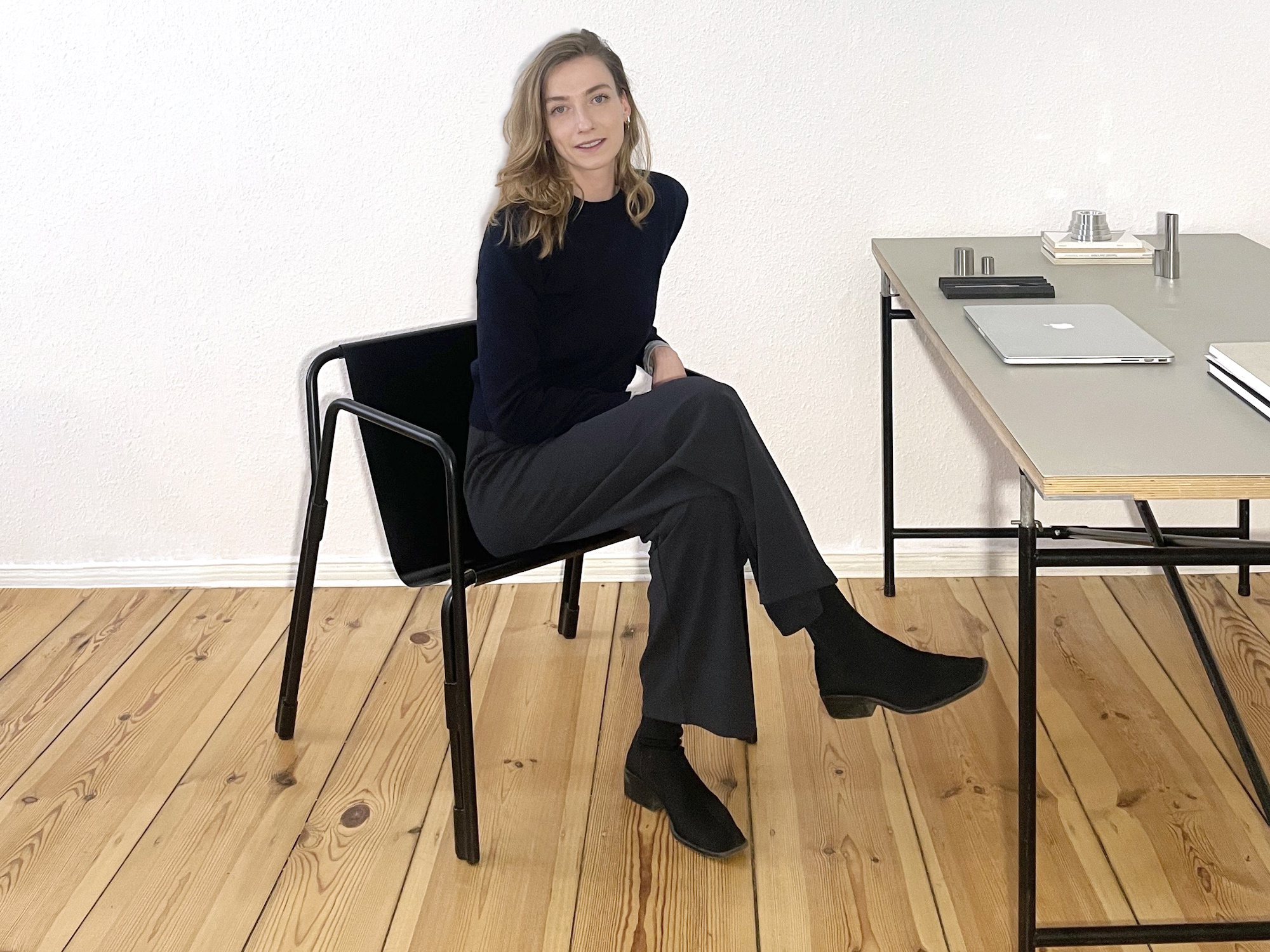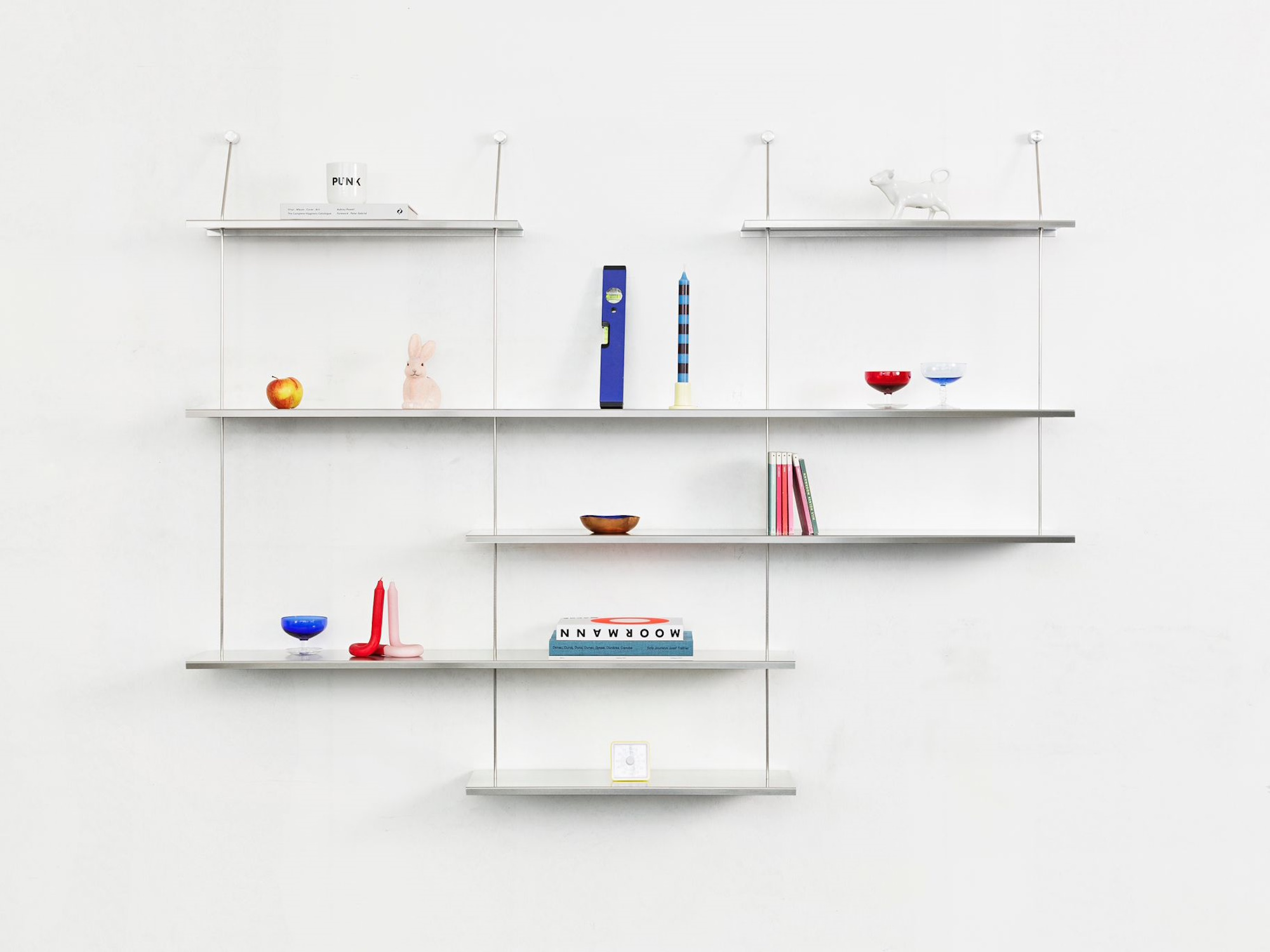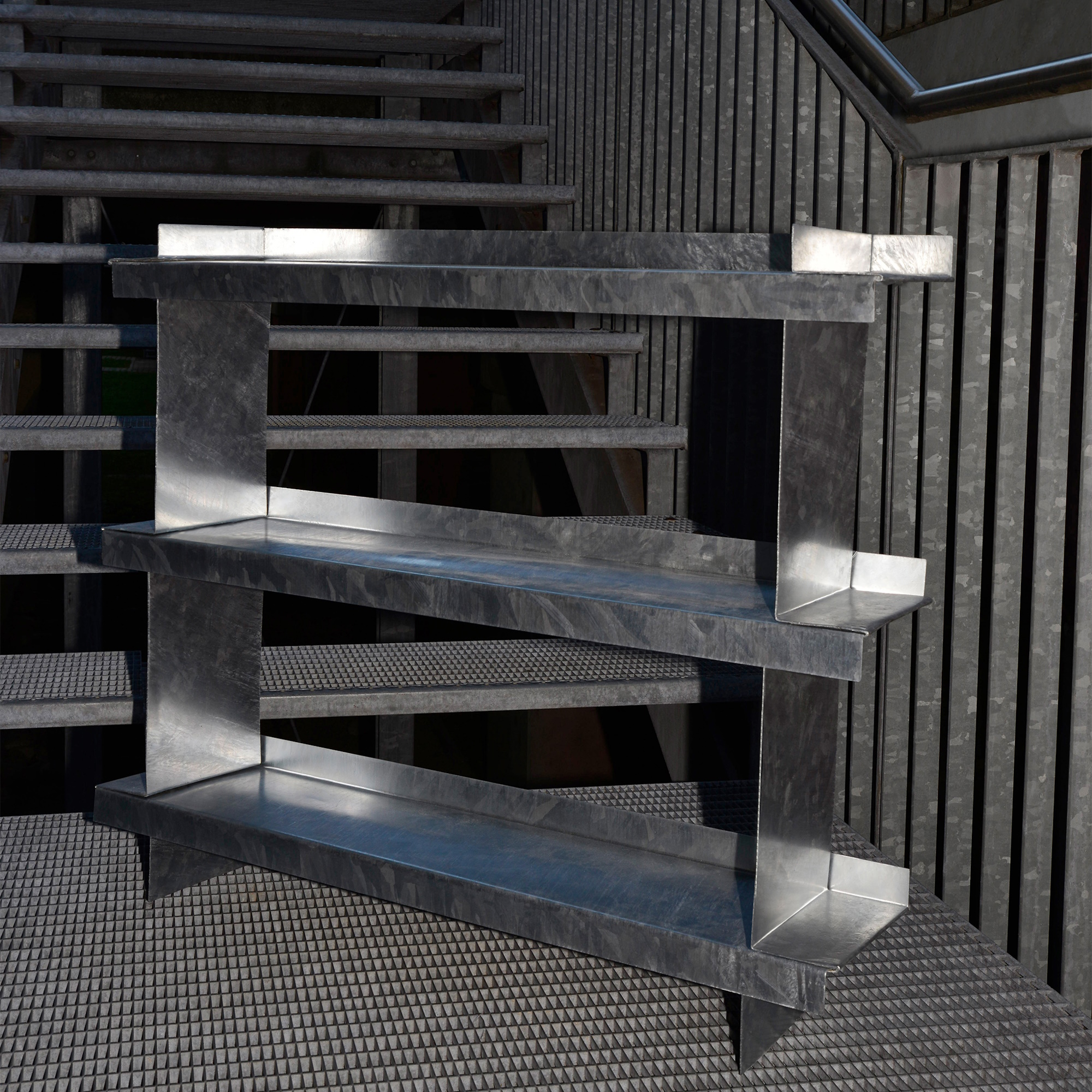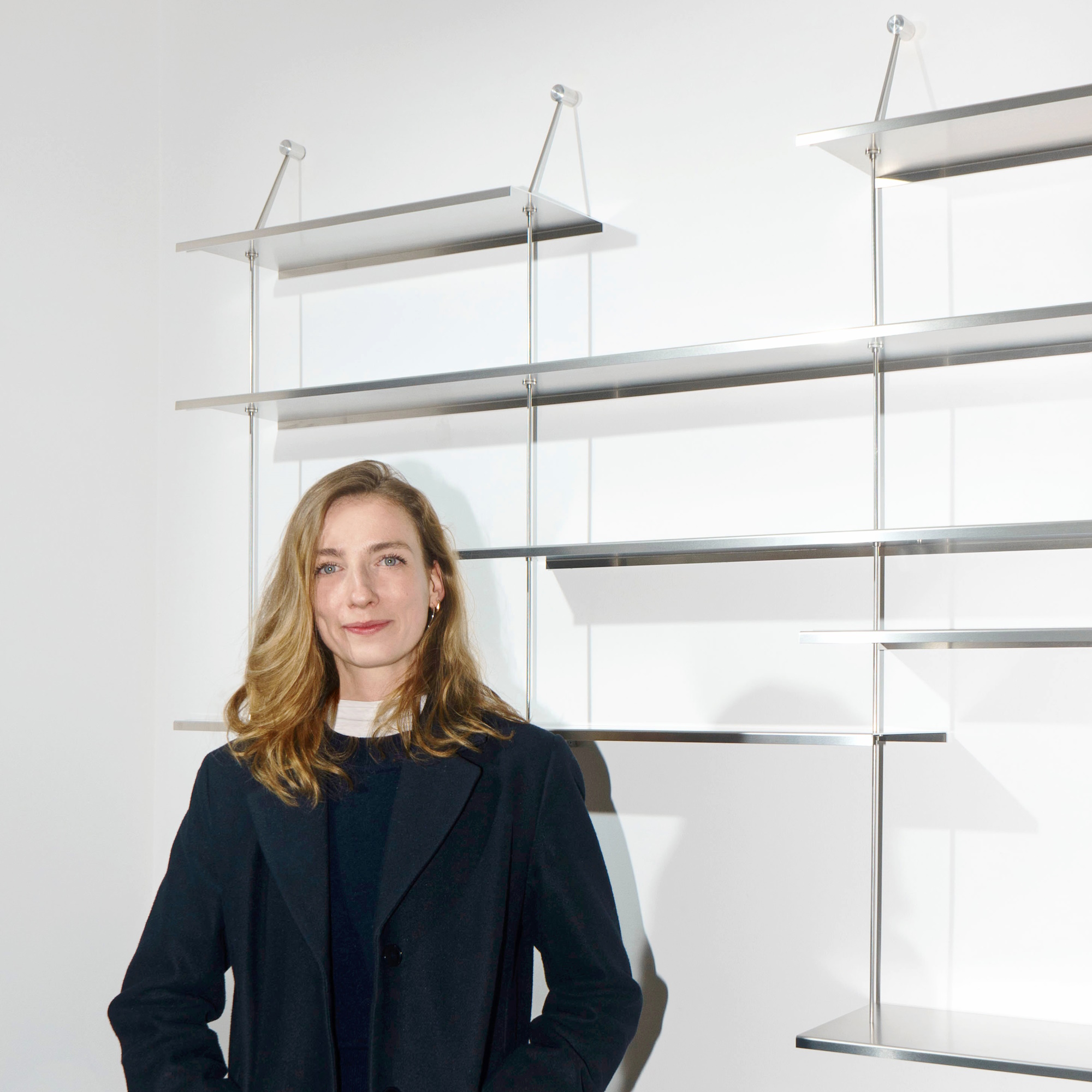"Einfach machen", 'Just do it'– a simple piece of advice from Volker Albus, her Professor at the Hochschule für Gestaltung Karlsruhe, has guided designer Marie Luise Stein to this day.
Our colleagues from smow met up with Marie Luise to discuss her design philosophy, the creation of her first work, the Liesl shelving system, and Einfach machen.......

After graduating from the Hochschule für Gestaltung Karlsruhe Marie Luise Stein gained experience in a variety of design disciplines before establishing herself in her own studio in Berlin in 2022 from where she both develops her own projects in the areas of product design, interior design, and curatorial practice and also cooperates as a member of an interdisciplinary team on retail design projects and the development of customised product and interior solutions.
Together with Nils Holger Moormann Marie Luise Stein developed the Liesl shelving system – a minimalist and sophisticated storage solution for modern living, and which seemed a good place to start, for all with the question, how the idea for the Liesl wall shelf came about? Was there a specific moment that inspired it?
Marie Luise Stein: I had the basic idea for Liesl before I started studying. While preparing my portfolio I experimented with different materials and built small models to explore connections and material properties, this led to the concept of a modular wall shelf that could be flexibly expanded and hung. Over the years I worked on it repeatedly until the first 1:1 prototype was created and from there I developed the concept further until I finally worked with Nils Holger Moormann to make Liesl what it is today.
smow: What challenges did you face when developing the shelf, and how did you overcome them?
Marie Luise Stein: The biggest challenge was the suspension, combining modularity and individual usability with a simple, intuitive construction—an approach that also needed to be reflected in the design. I tested various solutions for this—but the final solution only emerged during the joint development process with Nils Holger Moormann's team. The result is a mounting system in which only the upper rods are anchored to the wall with mounting heads.

smow: Why the decision for aluminium and stainless steel?
Marie Luise Stein: When choosing the materials, our focus was on a minimalist, durable, and resource-efficient construction. Stainless steel was a natural choice for the rods because of its stability and corrosion-resistant properties. The shelves made of untreated aluminum are lightweight, durable, and fully recyclable—an aspect that plays an important role for both me and Nils Holger Moormann. Furthermore, this combination combines functionality with a clear aesthetic. We really like Liesl in this material combination, but other options aren't ruled out—so it's quite possible that there will be more material variations in the future.
smow: To what extent does the Liesl shelf reflect your personal design philosophy? Which values or principles are particularly important to you?
Marie Luise Stein: It's important to me to design products that adapt to changing living circumstances and spatial conditions to enable long-term use. Modularity, construction, and sustainable materials play a central role in this. Liesl embodies precisely these principles and also enables the separation of components. The resource-saving approach of collaborating with regional companies, as practised by Nils Holger Moormann, also aligns with my own values. Overall I'm interested in designs that address space, function, and flexible solutions – they are not only an inspiration for Liesl, but also influence my work in general.
smow: Are there any particular designers or designs that inspired you in the design of the shelf?
Marie Luise Stein: There wasn't one specific design that inspired me, but various designs and concepts influenced the design of Liesl. Classics such as the String shelving or Dieter Rams' 606 shelving system inspired me with their flexibility and adaptability, as did modular systems such as USM Haller and MOEBE's system shelving system with their connection solutions. But I also drew inspiration from other areas, such as exhibition design. For example, the temporary architectures of Raumlabor Berlin, which flexibly adapt to different needs, or systems from the construction industry, such as the MiniTec aluminium profile, with their connection technology and expandability. I also find designers who reinterpret such principles fascinating – for example, Philippe Malouin's T-Board. Overall, I'm more interested in designs that explore space, function, and flexible solutions – I think they're not just an inspiration for Liesl, but also influence my work in general.

smow: How did your time at the Hochschule für Gestaltung Karlsruhe shape your understanding of design? Is there anything you particularly took away from it?
Marie Luise Stein: There are a few things that have shaped me. The freedom of the diploma program allowed me to take interdisciplinary seminars and find my own path. If I had to choose, however, it would be a phrase from my Professor at the time, Volker Albus, that has stuck in my mind to this day: "Just do it!" At first, that irritated me, but ultimately, it's precisely this insight that's important for me—to simply get started, try things out, and find access to ideas through practice.

smow: You work on projects that design interiors and exteriors. How does this work influence your product designs?
Marie Luise Stein: Working on the design of interiors and exteriors has fundamentally broadened my perspective on product design. It's no longer just about the individual object, but about its interaction with the entire space and the people who use it.
smow: Which designer would you like to have a coffee with, and why?
Marie Luise Stein: I'd like to have a coffee with Muller Van Severen (Fien Muller and Hannes Van Severen, editor's note). I find their ability to combine sculptural forms with high usability particularly interesting. They manage to create a reduced yet vibrant aesthetic with simple yet powerful materials and forms, naturally combining functionality and experimentation. Their furniture often straddles the border between art and design. Over a coffee I'd love to hear how they combine these two areas so organically.
smow: Which designer is your idol?
Marie Luise Stein: Perhaps not exactly an idol, but I've always been impressed by Achille Castiglioni's work – especially his approach to combining functionality with lightness. For example, by reinterpreting everyday objects and achieving maximum effect with minimal means. His eye for the essential and his unconventional approach are a great inspiration to me – he shows that good design can be not only practical, but also emotional and unexpected.

smow: What is your favourite design classic?
Marie Luise Stein: There are a few, but one design classic that delights and accompanies me every day is the Bic Cristal ballpoint pen by Marcel Bich from the 1950s. For me it's a perfect example of minimalist, functional design. What I particularly like about it is the combination of clear form and absolute practicality. For me, it's a prime example of how good design doesn't always have to be expensive or extravagant, but can also leave a lasting impression in everyday life.
smow: Which current design trends do you find particularly exciting? And how do they influence your work?
Marie Luise Stein: I find it exciting to see how innovative materials are increasingly coming into focus in the spirit of sustainable material development and the circular economy – not just as a trend, but as a necessary development. I'm particularly interested in material innovations that conserve resources and offer new functional possibilities. In my work, I try to use materials consciously, make them separable, and avoid using additional components.
smow: What advice would you give to young designers who want to develop their own products?
Marie Luise Stein: Probably the same advice Volker Albus gave me: Just do it. It's precisely through doing—through prototypes, tests, and direct exchange with others—that insights emerge. It also helps to engage with production and real manufacturing processes early on. And perhaps most importantly: dare to collaborate with others. Exchange and cooperation often get you further than trying to solve everything alone.
smow: Thank you very much for the interview and continued success!